VIDEO: How does Derbyshire County Council fix potholes?
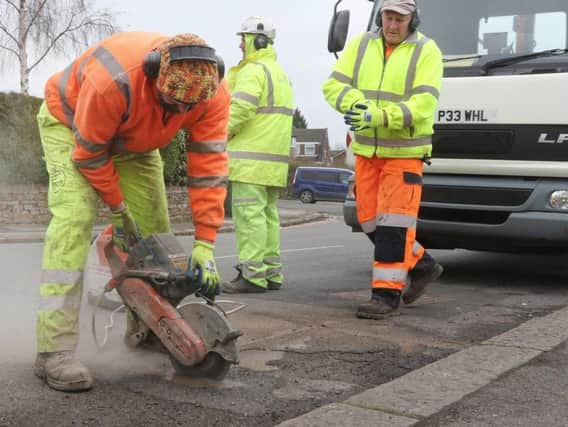

The action comes after a bad spell of weather has resulted in the number of potholes listed for repair rise from 120 in December to almost 1,800 by mid-February.
To find out exactly how the teams will be putting the brakes on the issue, we headed out on the roads with Derbyshire County Council....
Advertisement
Hide AdAdvertisement
Hide AdIt’s 9am and the Derbyshire Times is at the county council depot in Stonegravels, Chesterfield.
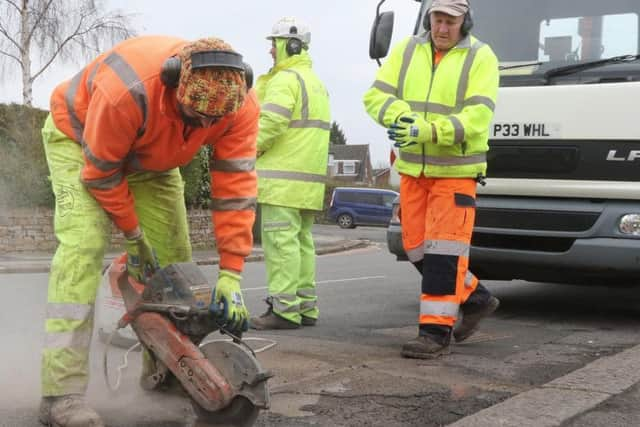

After a quick briefing and a hot drink to warm us up, we are taken out to Dronfield with hi-vis jackets at the ready.
We are joined by two road inspectors from the council who have around 20 years’ experience in this role.
Their job is to assess the condition of the roads, among many other health and safety aspects, including logging any potholes which may need some attention.
Advertisement
Hide AdAdvertisement
Hide AdEach inspector has their own area to look after, so they know the roads like the back of their hand and easily can spot a new pothole. It can also get quite competitive over who has the healthiest roads, so I’m told. A pothole inspection involves a steady drive up and down both sides of a road, looking for any new faults that have appeared since the last check took place.
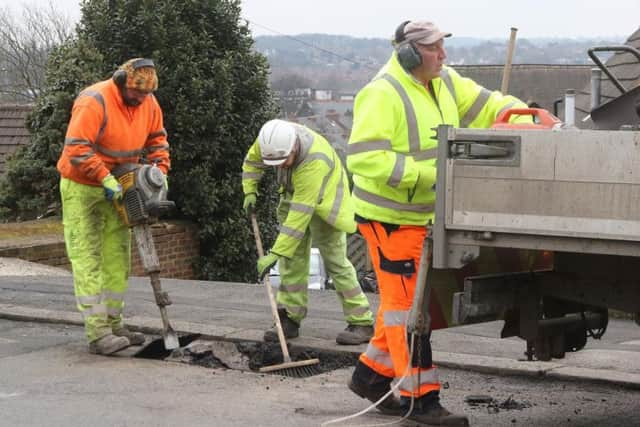

Some routes are analysed more than others, with main roads understandably inspected more than quieter village streets.
Our journey took us to Stonelow Road, one of the lengthier streets in the north Derbyshire town, close to the secondary school.
A trip up and down this road results in the inspector noting down 11 new potholes.
Advertisement
Hide AdAdvertisement
Hide AdHe then logs each one electronically, recording an accurate location, a suggested traffic measure and a priority level. This only takes a couple of minutes and is then sent to the main base at County Hall in Matlock where another team will then take over and get to work allocating when they can be fixed.
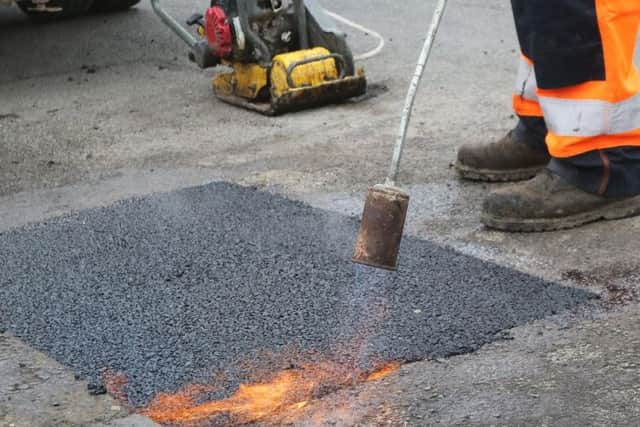

The second part of the inspection took us to Wreakes Lane where, upon reaching the end of the road, we came across a chunky-looking pothole in the middle of a mini roundabout on High Street, opposite Sainsbury’s.
As we are at the scene, a number of vehicles do well to swerve the gaping hole while others drive over it with a thud.
The inspectors explain that they are logging this pothole as being a high-level priority and request action is taken within 32 hours, effectively meaning it will be all sorted the following day.
Advertisement
Hide AdAdvertisement
Hide AdNow we have seen how an inspection works, we head over to Brockwell Lane in Chesterfield to see how a pothole is actually fixed.
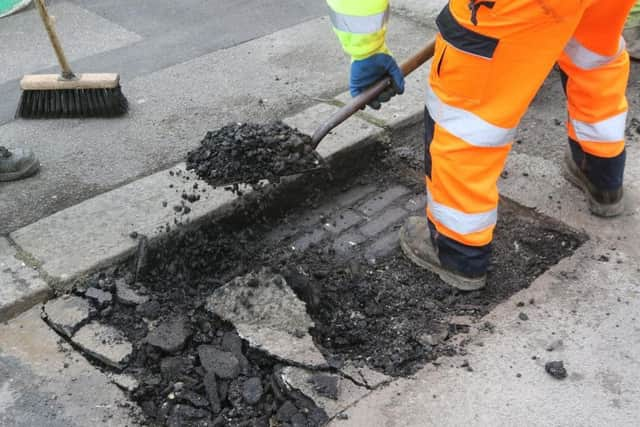

The first job is to find its location which, it turns out, can be harder than it sounds because workers rely on the information provided by members of the public being accurate.
Nowadays people can report a pothole to the county council online, submitting basic information such as location, size, depth and a picture.
But of course a ‘huge’ pothole to one person, can be barely anything to someone else.
Advertisement
Hide AdAdvertisement
Hide AdFor the workmen to deem action necessary, a pothole needs to be 40mm. But that does not mean that those which do not meet this requirement are ignored. It will still be logged and checked on further inspections.
Remember, the council looks after 3,500 miles of roads, so it can’t be expected to repair every pothole immediately. We saw at first-hand an example of the above problem.
A members of the public had reported what they believed to be a pothole in the road and gave a location. But upon inspection, it wasn’t clear where it was because no picture had been supplied and the only possible thing it could have been was a mere dent.


So although on this occasion the problem could not be cured, I was told it would remain on the system and would not be forgotten.
Advertisement
Hide AdAdvertisement
Hide AdFurther along the road we found ourselves a fairly large pothole which had been reported and could be identified.
I was told there is no set time for how long a pothole takes to repair - but this one took around 20 minutes - rather impressive I thought.
In that time the team had cut out an area around the hole, removed the layer underneath, relaid it with fresh fixing materials, smoothed it out and gave it a neat and tidy topping.
As simple as that.
Easy for us to say, mind. We just stood and watched while they grafted away in the freezing cold.
Advertisement
Hide AdAdvertisement
Hide AdInstead, we opted for a handshake and it was back into the warmth for us.
How does a pothole form and how is it fixed?
Potholes form when water seeps under the road surface causing it to crack. They are made worse when rainfall, freezing and thawing combine, to make the road break up more quickly.
Fixing a pothole starts with cleaning out any loose material and draining away any water.
If there is a solid edge a square is cut, if not the hole is trimmed to an appropriate shape. Bitumen is poured into the hole to coat the bottom and the sides before a layer of tarmac is added.
This is smoothed and compacted using a roller machine.
Advertisement
Hide AdAdvertisement
Hide AdHotboxes are metallic boxes used to carry the materials from the depot to the repair site.
The advantage of these are they keep the materials at the optimum temperature for the best consistency, making the pothole repair more effective.
Factors which determine which potholes are fixed?
Factors which determine how quickly a pothole is repaired include:
Location – a pothole in a driving lane, the centre of the road or a cycle lane will be classed as more urgent than a pothole by the kerb
Advertisement
Hide AdAdvertisement
Hide AdDepth – to be recorded as a pothole in line with national guidance, a fault must be at least 40mm deep on a road or 20mm on a footpath
Size – how far it spreads across the road or footpath
Speed limit of the road – a pothole on a busy main road with a higher speed limit would take priority over the same pothole on a cul-de-sac.
Potholes categorised in most urgent need of repair will be filled within a maximum of 32 hours – usually much quicker.
The majority of potholes fall into the less urgent category and are fixed between five and 28 days after being reported.
Advertisement
Hide AdAdvertisement
Hide AdIf a road defect is reported as a pothole when it is not – perhaps because it looks unsightly or unsafe - it may be fixed at a later date as part of other road repair schemes.
The council is not responsible for fixing potholes on unadopted ‘private’ roads – this is the responsibility of the landowner.
And it doesn’t fix potholes on roads looked after by Highways England, such as motorways, dual carriageways or by-passes.
What did the county council say?
Councillor Simon Spencer, Derbyshire County Council cabinet member for highways, transport and infrastructure, said: “Over the last few weeks the weather has been exceptionally bad with constant freezing and thawing and huge amounts of rainfall. This causes the road to crack which is why there has been a significant rise in the number of potholes and carriageway deterioration.
Advertisement
Hide AdAdvertisement
Hide Ad“We can’t control the weather but in recognition of the recent adverse conditions we have responded immediately, making extra cash and roadworkers available specifically for pothole repairs.”
Councillor Spencer added: “We know that potholes are a great concern to motorists and we have made good progress over recent months in dealing with them. However, we are never complacent. We will continue to monitor the situation and use our resources where they are most needed.”